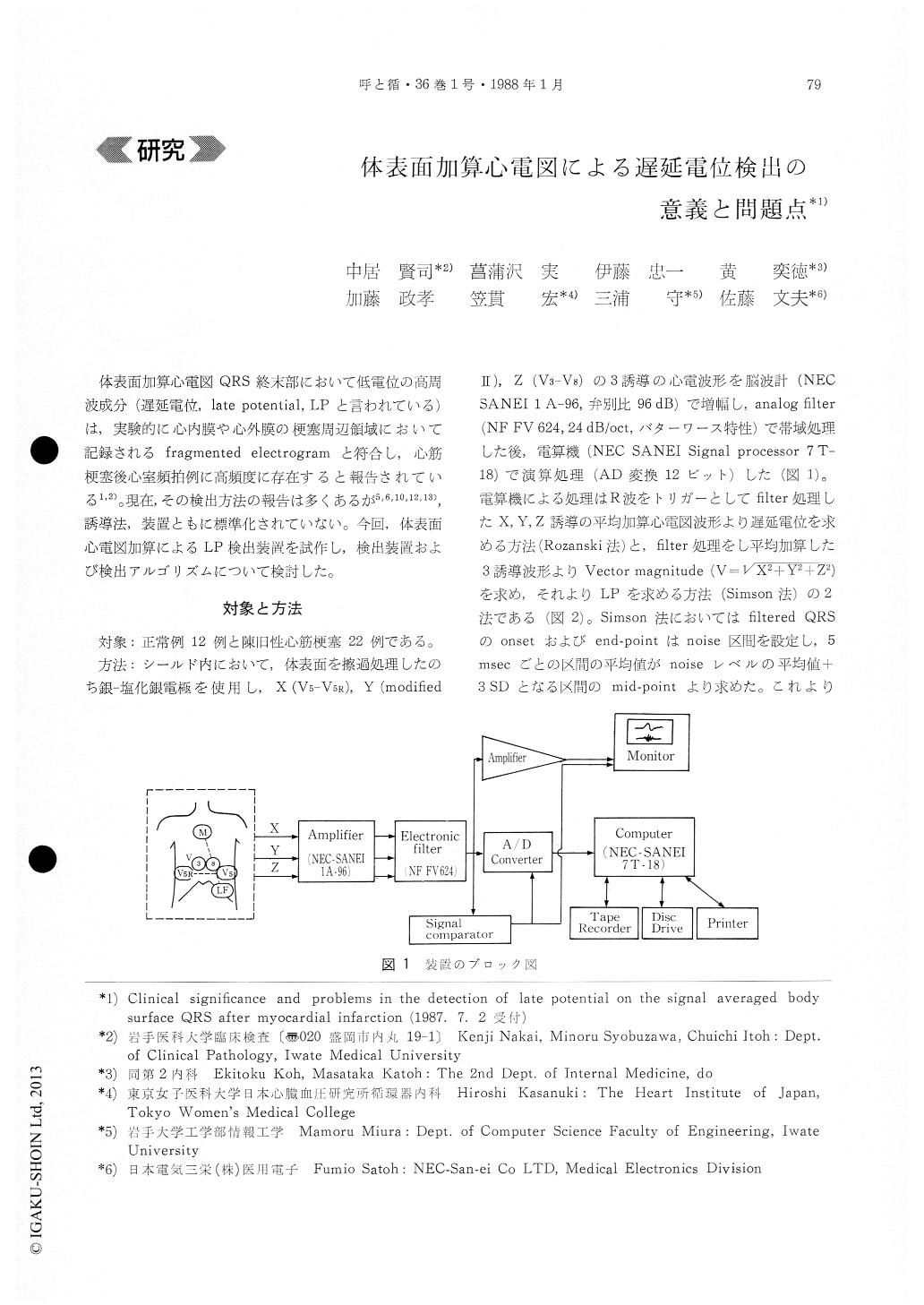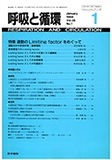Japanese
English
- 有料閲覧
- Abstract 文献概要
- 1ページ目 Look Inside
体表面加算心電図QRS終末部において低電位の高周波成分(遅延電位,late potential,LPと言われている)は,実験的に心内膜や心外膜の梗塞周辺領域において記録されるfragmented electrogramと符合し,心筋梗塞後心室頻拍例に高頻度に存在すると報告されている1,2)。現在,その検出方法の報告は多くあるが5,6,10,12,13),誘導法,装置ともに標準化されていない。今回,体表面心電図加算によるLP検出装置を試作し,検出装置および検出アルゴリズムについて検討した。
In this study we evaluate the reliability of the high-frequency analysis of the signal averaged sur-face ECG which can detect low amplitude signals in the terminal portion of the body surface QRS of myocardial infarction with ventricular tachycardia (VT). Twenty two patients more than 4 weeks post transmural MI and 12 normal subjects were selected. All patients were in normal sinus rhythm and did not have bundle branch block. Body surface ECG recording was performed using bipolar X, Y, and Z leads in a shielded room. One lead was served as the reference. The three-channel amplifier used was a commercially available EEG system. The common mode rejection ratio was 120 dB. The signal from each lead was amplified and passed through an analogue filter (NF FV 624) with a low cut frequency of 100 Hz and a high cut frequency of 300 Hz, and then AD converted with 12-bit accuracy at 1024 samples/sec. The filtered signals for the three leads were displayed separately for each channel and were combined into a vector magnitude, √X2+ Y2+ Z2. The percent of the ratio of the root mean square voltage in the last 40 msec of the QRS complex to that of the total filtered QRS (%RMS 40) and the duration of filtered QRS were calculated automatical-ly. These parameters obtained from the three groups were compared.
The 6 MI patients (4 anterior, 2 inferior) with late potential had low amplitude signals at the end of the filtered QRS complex. The %RMS 40 was 6.8± 2.9% (p<0.001) in MI with late potential. In con-trast, it was 28±6.5% (p<0.01) in MI without LP, and 37±11% in normal subjects.
The percent ratio of the last 40 msec RMS voltage (%RMS 40) was found to effectively discriminate the MI with LP from MI without LP, and normal sub-jects. The common problem with the signal proces-sing technique is filter ringing and the definition of LP. For determining the amplitude and durationof late potential, we used a vector magnitude that incorporated the characteristics of the filtered X, Y and Z leads. However, the vector magnitude of the RMS voltage may vary according to the filter characteristics used. In the future, the standardiza-tion for the filter frequencies and characteristics will be necessary for the reasons mentioned above.

Copyright © 1988, Igaku-Shoin Ltd. All rights reserved.


